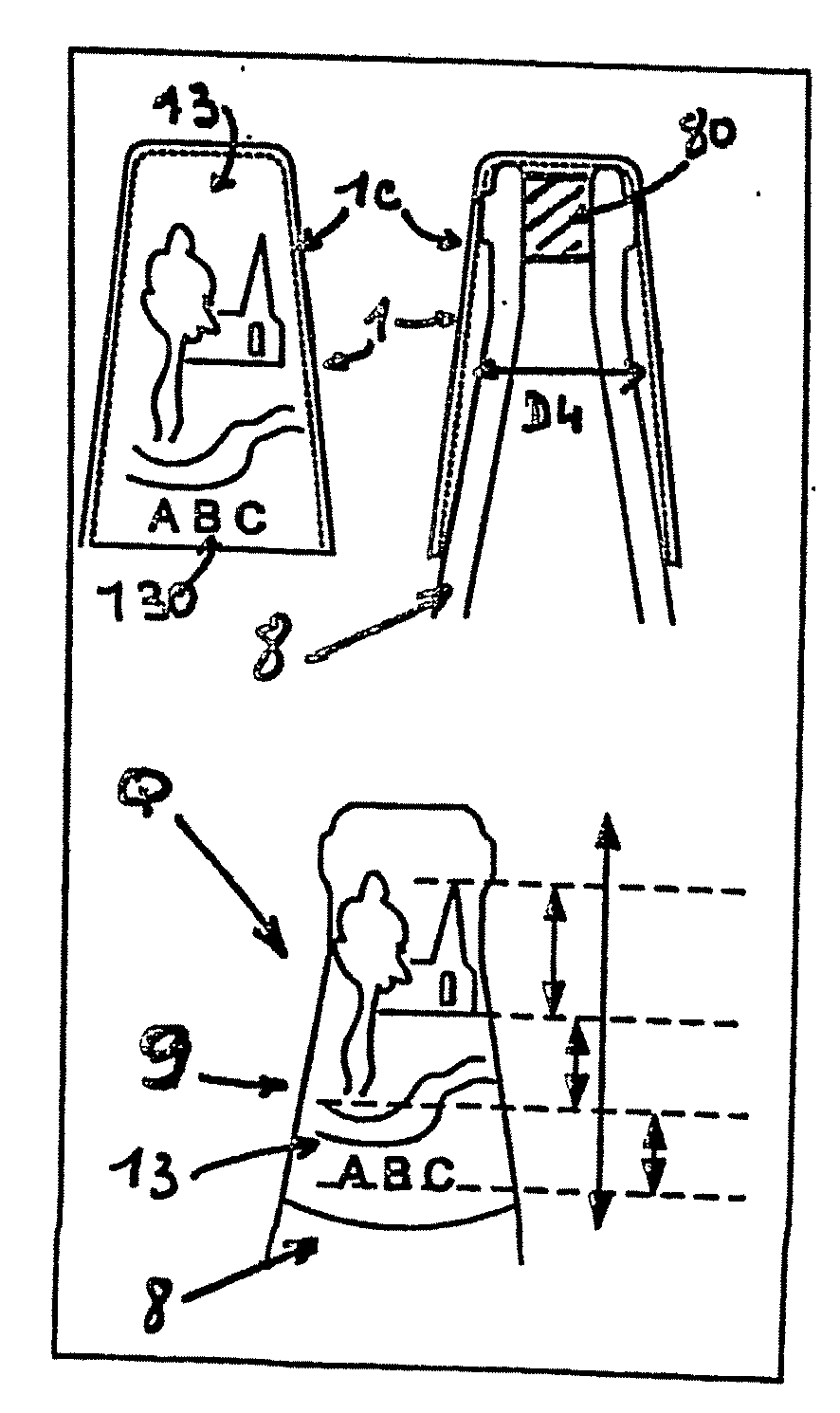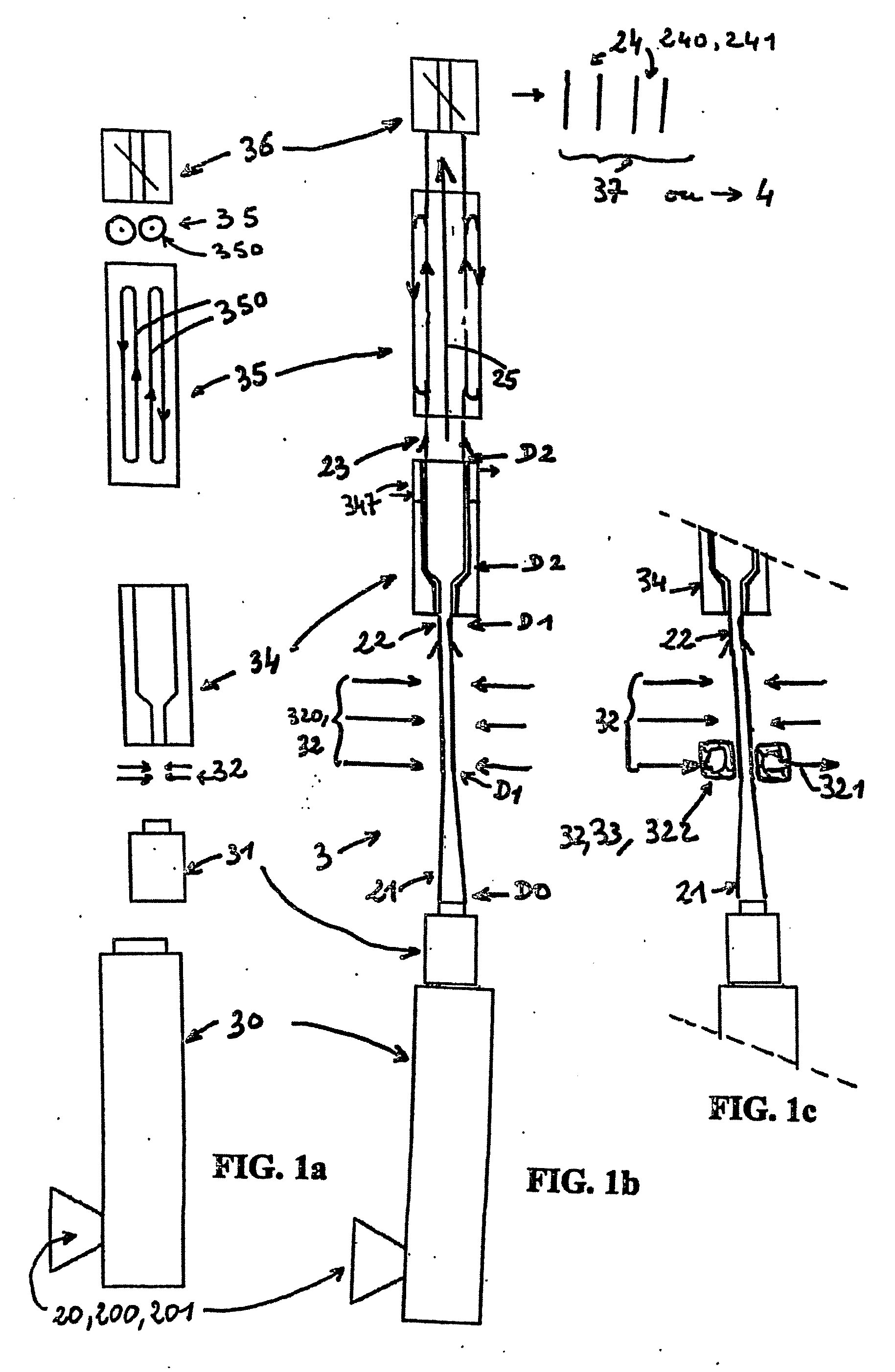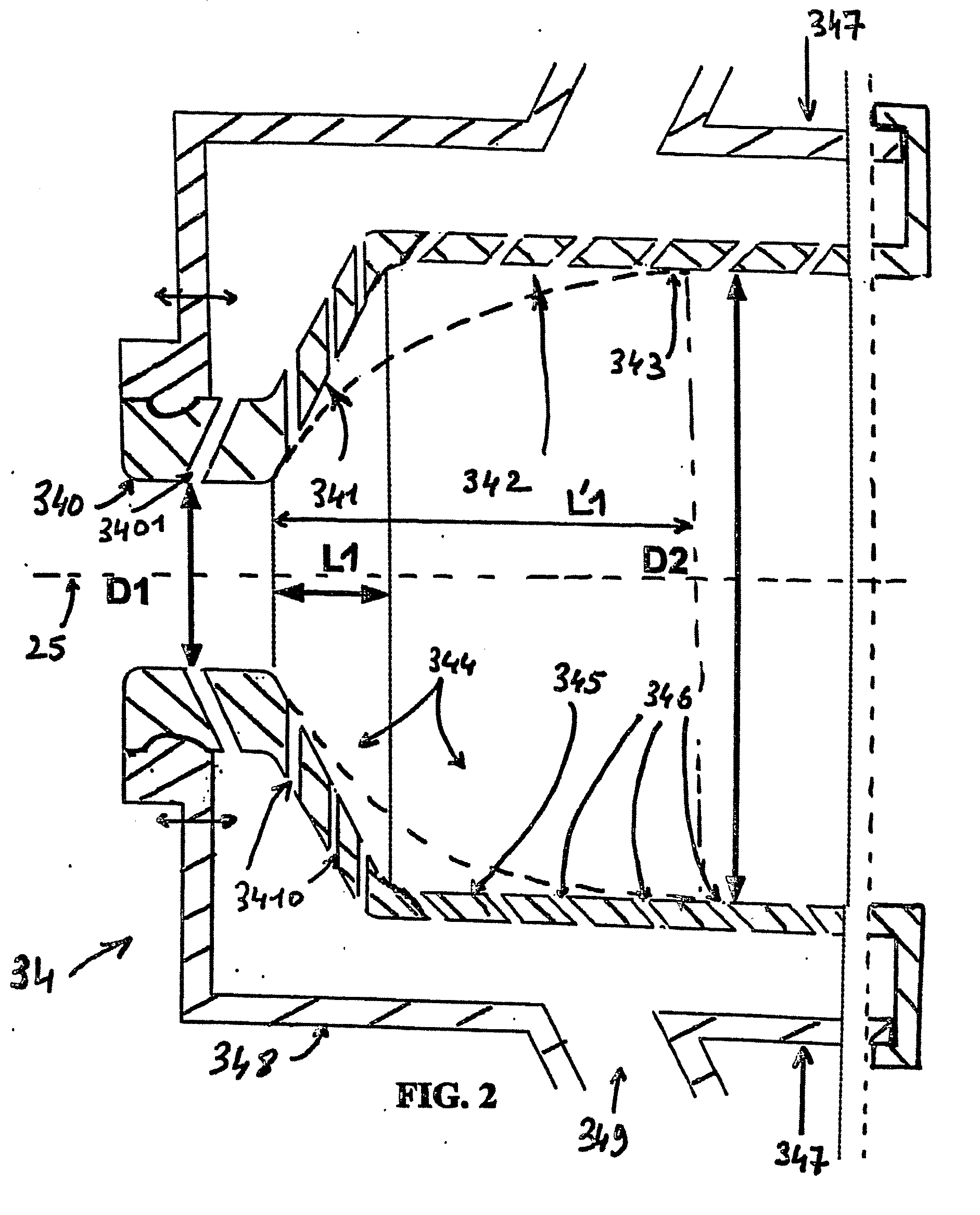Method for the production of caps with a heat shrinkable skirt and caps obtained according to the method
a production method and technology of a heat shrinkable skirt, applied in the field of closed caps, can solve the problems of low efficiency of the method, insufficient flexibility of the known method, and use of an irradiation device with an investment cost and an operating cos
- Summary
- Abstract
- Description
- Claims
- Application Information
AI Technical Summary
Benefits of technology
Problems solved by technology
Method used
Image
Examples
example embodiments
A) Manufacturing of Tube Portions
[0153] Most tests on manufacturing of tube portions were carried out with the device (3) shown in FIG. 1b. Other tests were carried out with the device shown in FIG. 1c.
[0154] In these tests, an extruder with a maximum flow of 50 kg / h of a thermoplastic material was used, for which the “length / diameter” ratio of the screw was equal to 30.
[0155] An annular die or extrusion head with a diameter D0 equal to 27 mm was used, the formed extruded tube having a thickness E0 of 0.7 mm and a temperature T typically varying from 190° to 240° C.
[0156] The radial expansion step was carried out over the axial distance L0 that typically varies from 0.3 m to 0.6 m, at the exit from the annular die. The axial drawing step was then blocked using blown air as the means of cooling the axially drawn tube, such that the axially drawn tube is at a temperature varying from 140° C. to 160° C. and its diameter is equal to the diameter D1 of the entry ring (340, 340′) to ...
PUM
| Property | Measurement | Unit |
|---|---|---|
| Temperature | aaaaa | aaaaa |
| Temperature | aaaaa | aaaaa |
| Temperature | aaaaa | aaaaa |
Abstract
Description
Claims
Application Information
 Login to View More
Login to View More - R&D
- Intellectual Property
- Life Sciences
- Materials
- Tech Scout
- Unparalleled Data Quality
- Higher Quality Content
- 60% Fewer Hallucinations
Browse by: Latest US Patents, China's latest patents, Technical Efficacy Thesaurus, Application Domain, Technology Topic, Popular Technical Reports.
© 2025 PatSnap. All rights reserved.Legal|Privacy policy|Modern Slavery Act Transparency Statement|Sitemap|About US| Contact US: help@patsnap.com



